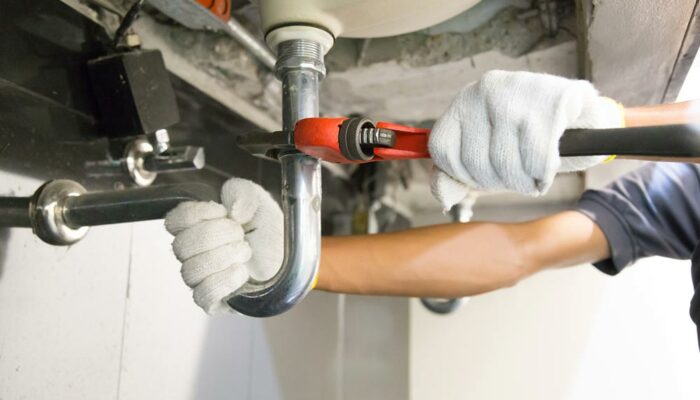11 DIY plumbing mistakes and ways to fix them

Today, because of the internet and plumbing tools that are easy to use, DIY plumbing has become a popular option for homemakers. Along with fixing problems like leakages, plumbing also involves identifying any issues in pipes, water tanks, taps, faucets, etc., every now and then and looking for suitable solutions. Although time-consuming at times, DIY plumbing can also be a fun-filled and cost-saving experience. But here are some plumbing mistakes DIYers should avoid:
Using excessive amounts of liquid drain cleaners
Many beginners in plumbing use large quantities of liquid drain cleaners to unclog sinks and kitchen drains. However, liquid drain cleaning may lead to several problems in the long run. For example, even after the drain is rinsed with water, some of the solution may remain in the pipes and can cause damage. So, it is always safe to replace liquid drain cleaners with plungers or natural solutions like baking soda and vinegar.
Not checking the toilet and sink for leaks regularly
Even minute leakages can start posing major issues later on, so regularly checking the toilet and sink for leakages is essential to prevent the problems from escalating. One should set up a schedule to examine the drainage systems, taps, faucets, etc., at least once every month to detect problems early on and fix them promptly.
Fixing tubes and fittings too tight
Tightening tubes, fittings, pipes, etc. too much can cause the fitting to develop cracks, leading to potential leakages and plumbing issues. These cracks may not be visible immediately, but they begin to appear eventually and can break and leak. Also, tightening closet bolts in the toilet can crack its porcelain. So, one should be careful not to tighten any of the tubes, pipes, or fittings too hard.
Not researching what tools are required
Tools are a plumbing DIYer’s best companions because they make this process incredibly easy and efficient. Many advanced plumbing tools are available these days, so one should thoroughly research what tools are needed before starting DIY plumbing. A basin trench, plungers, tubing cutter, hacksaw, and pliers are minimal tools that one shouldn’t miss buying.
Not letting copper pipes dry completely before soldering them
A common plumbing mistake is to start sweating copper pipes prematurely. One needs to be patient to wait for the pipes to dry completely, because they can develop tiny pores on their surfaces if they are sweated before being dried. With time, water may start escaping from these holes, causing a leakage.
Forgetting to turn off the tap before replacing a valve
Many people tend to leave the water on while trying to fix or replace a valve. But if they are unable to fix the new valve, there is a chance that water can flood the bathroom and the rooms around it. So, instead of risking colossal damage to property, it is best to turn off the tap before fixing or replacing a valve.
Not understanding the unique functions of wyes, tees, and elbows
Although wyes, tees, and elbows ostensibly do similar things, they still have distinct properties. Sometimes, using one in place of the other can cause a code violation, leading to severe problems later, even causing sewage water to seep into the house. So, one should closely research the differences between wyes, tees, and elbows, understanding which should be used in what situation so that such problems can be easily avoided.
Not installing cleanouts
A cleanout is the point of access to drainage systems for cleaning and unclogging a sewer line. While many homes do not have cleanouts, installing one can make it incredibly easy to unclog pipes and detect problems in one’s drainage system. These problems can then be easily avoided later. Also, one should remember to install cleanouts at the right places. The ideal locations for a cleanout are kitchen sink walls, bathrooms, washing machines, and backyards or front yards of a home. Having a cleanout above the first floor of a building is not a wise decision.
Using the toilet like a trash can
Flushing other waste material can choke the drain and cause serious plumbing problems. Some things to avoid flushing are silverware, plastic items, oils, cooking grease, and food materials. The drains and garbage disposals should be cleaned regularly to remove accumulated particles.
Not taking quick action
It is easy to overlook plumbing problems and procrastinate while plumbing independently. But when one ignores seemingly minor issues at the start, they can escalate into big ones, because of which one may end up spending more than they may have if they had fixed the problem earlier. So, taking immediate action and being proactive is a must for plumbing DIYers.
Refusing to seek professional help for emergencies
Yes, DIY plumbing may be fun, cost-effective, and satisfying, but sometimes, a professional is needed to fix certain problems, especially when they go out of hand. In these cases, it is best to leave the task to professional plumbers. Not calling a professional soon can only make matters worse, costing a lot more than it normally should.





